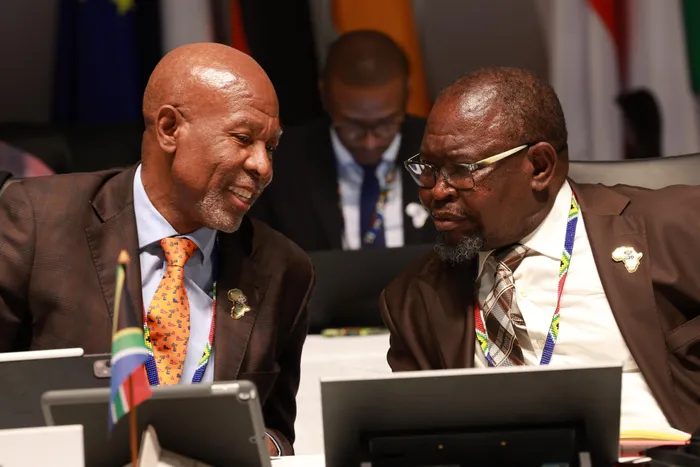South Africa's Reserve Bank and National Treasury prepare to lower inflation target
ECONOMY

South Africa Reserve Bank governor Lesetja Kganyago and Finance Minister Enoch Godongwana. The Sarb and Treasury are nearing the completion of their joint efforts to review and refine the nation's inflation target strategy.
Image: Supplied/SARB
The South African Reserve Bank (Sarb) and the National Treasury are nearing the completion of their joint efforts to review and refine the nation's inflation target strategy.
A team consisting of experts and policymakers has been working diligently to formulate recommendations that aim to enhance the economic stability of South Africa, particularly in these challenging times characterised by global uncertainties.
“The joint South African Reserve Bank and the National Treasury team is almost done with its work on the inflation target and will soon present its recommendations to the Governor and the Minister of Finance,” the Sarb said in its annual report on Monday.
Recently, discussions have emerged regarding whether South Africa’s current inflation target midpoint of 4.5% is consistent with price stability of the 3-6% target range, and whether adjusting it to a lower rate might help secure the current trend of low inflation.
Analyses undertaken by the Sarb, Treasury and other experts have highlighted significant potential benefits from reducing the inflation target to 3%, and recommendations are expected to be a vital step in addressing these economic challenges.
Modelling by the Sarb for the Monetary Policy Committee meeting in May supports this, indicating that inflation expectations could decline quickly given the recent history of inflation hovering around the lower end of the target band, along with enhanced Sarb credibility.
Consequently, borrowing costs would fall more significantly under the 3% scenario compared to the baseline forecast over the projected period.
Sarb Governor Lesetja Kganyago, in the bank’s annual report for the year ending 31 March, said underlying measures of inflation also appear to be contained.
Kganyago said while risks to the outlook remained, there can be little doubt that inflation has been brought back under control for now.
“The main concern with South African inflation is not our ability to hit the target. Rather, it is that our target is high compared to other countries. For this reason, despite our success in stabilising inflation, the price level is almost 20% higher than it was in 2021,” Kganyago said.
“Although an inflation rate of 4.5% may seem moderate, it still causes prices to double every 16 years. This is hard to reconcile with our constitutional obligation to safeguard the value of the currency. For this reason, we continue to make the case for a lower target, one that aligns with international peers and promotes price stability.”
According to the Sarb, headline inflation is projected to average 3.2% this year, increasing to 4.2% in 2026 before reverting to the target midpoint by 2027.
This muted trajectory reflects lower inflation projections across all key components of headline inflation, supported by a favourable starting point, lower assumptions for fuel and electricity price increases and a relatively strong rand exchange rate.
The trajectory of core inflation is forecast to closely track headline inflation. Inflation risks appear balanced overall, with trade policy uncertainties and potential rand depreciation posing as the main upside risks.
A shift to a lower, more precise inflation target – such as a 3% headline inflation rate could bring about a range of macroeconomic benefits.
These include reduced inflation and borrowing costs, improved policy transmission, and stronger economic growth.
However, Citadel Global director Bianca Botes said the transition must be carefully managed to avoid unintended consequences for investment and employment.
Botes said the success of a lower inflation target depends on clear communication and strong policy credibility.
She said the Sarb must signal its intentions clearly and build public understanding of the benefits of the new target. Fiscal policy should also play a supporting role, with measures to control public spending and align wage and price-setting practices with the new target.
“Administered prices – such as those for electricity, water, and transport – are a particular challenge. These prices are often set by the government or regulators and can be slow to adjust to changes in inflation. Reforms to make these prices more responsive to macroeconomic conditions would help to ensure that the benefits of lower inflation are felt across the economy,” Botes said.
“A headline consumer price inflation target of 3% – ideally as a point target – would reduce uncertainty, lower borrowing costs, boost growth, and protect the most vulnerable. The transition would require careful management and clear communication, but the potential rewards are substantial and long-lasting.”
BUSINESS REPORT